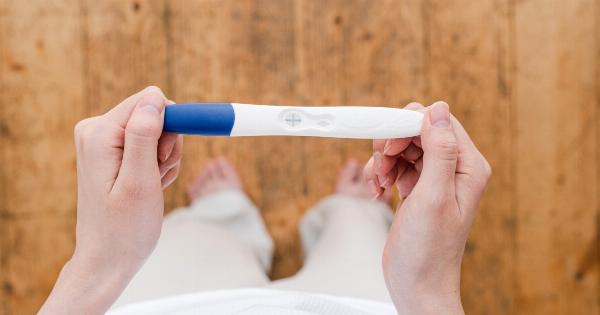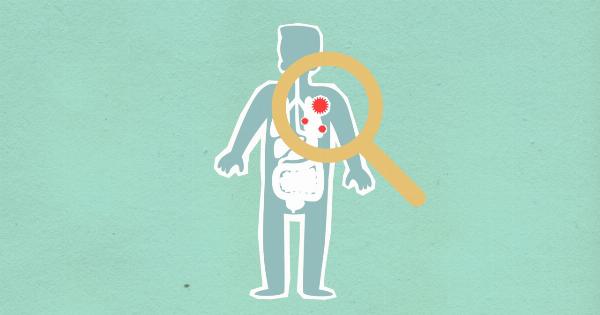Autism spectrum disorder (ASD) is a complex neurodevelopmental condition characterized by difficulties in social interaction, communication challenges, and repetitive behaviors.
It affects individuals differently and can vary significantly in its severity. Currently, autism can only be diagnosed after the age of 2 when behavioral symptoms become apparent. However, there is significant interest in the scientific community to explore the possibility of predicting autism in utero.
This would offer early intervention opportunities and potentially improve the long-term outcomes for individuals with ASD.
The Challenges of Early Diagnosis
Early diagnosis and intervention are crucial for improving outcomes in children with autism. Currently, the average age of diagnosis for autism is around 4 years old, leaving a significant gap during which early interventions could have been initiated.
Identifying autism before or shortly after birth would allow for timely interventions, leading to better cognitive, social, and emotional development.
However, predicting autism in utero faces several challenges. Autism is a complex disorder with a multifactorial etiology, meaning it is influenced by a combination of genetic, environmental, and possibly epigenetic factors.
Pinpointing the exact causes and biomarkers associated with autism remains a significant scientific challenge.
Genetic Factors and Predictive Models
Research suggests that genetic factors play a significant role in the development of autism.
Several studies have identified multiple genes associated with ASD, and variations in these genes could contribute to an increased risk of developing the disorder. Scientists have been utilizing this genetic information to develop predictive models for autism in utero.
A study published in the journal Nature in 2014 identified several genetic markers associated with autism. The researchers were able to accurately predict autism in 60 percent of high-risk infants using only genetic information.
While this research shows promise, larger studies are needed to validate these findings and improve the accuracy of predictive models.
Biological Markers and Imaging Techniques
Another avenue of research focuses on identifying biological markers and utilizing advanced imaging techniques to detect early signs of autism.
Scientists have been studying brain development in infants at high risk for autism using methods such as functional magnetic resonance imaging (fMRI) and electroencephalography (EEG).
These studies have shown differences in brain activity and connectivity in infants who later develop ASD. By identifying these early markers, it might be possible to predict autism in utero.
Although still in its early stages, this research offers hope for the future of early diagnosis and intervention for individuals with autism.
Environmental Factors and Predictive Models
In addition to genetic factors, environmental influences may also contribute to the development of autism.
Maternal factors such as prenatal exposure to certain chemicals, medications, or infections may play a role in increasing the risk of autism in offspring. Scientists are investigating whether these environmental factors can be used to predict autism in utero.
A recent study published in the Journal of the American Medical Association (JAMA) found that prenatal exposure to air pollution was associated with an increased risk of autism.
Using this information, researchers have started developing predictive models that take into account both genetic and environmental factors to improve the accuracy of predicting autism in utero.
The Ethical Considerations
While the idea of predicting autism in utero holds promise for early intervention, it raises significant ethical considerations.
The medical community needs to carefully weigh the potential benefits of early detection against potential negative consequences, such as increased parental anxiety and potential stigmatization of individuals identified as high risk for autism.
Another concern relates to the accuracy of predictive models, as false positives could lead to unnecessary interventions and undue stress for families.
Striking a balance between the benefits and potential harm of predicting autism in utero is crucial before implementing such an approach widely.
The Future of Predicting Autism in Utero
While predicting autism in utero remains a challenge, ongoing research in genetics, brain imaging, and environmental factors is offering new insights into the possibilities.
Collaborative efforts between scientists, clinicians, and ethical experts are essential to navigate the complexities surrounding early prediction and intervention for autism.
As predictive models improve, it will be crucial to develop comprehensive support systems that provide families with accurate information, counseling, and assistance in accessing appropriate interventions and services.
Early diagnosis should be accompanied by evidence-based interventions aimed at promoting the best possible outcomes for individuals with autism.
Conclusion
The possibility of predicting autism in utero holds immense potential for early interventions and improved outcomes for individuals with autism spectrum disorder.
Genetic, biological, and environmental factors are all being studied extensively to develop predictive models that can identify high-risk individuals before the onset of behavioral symptoms.
While significant progress has been made, it is important to approach this topic with caution and ensure the ethical considerations and potential implications are thoroughly evaluated.
Early detection of autism should always be accompanied by appropriate support systems and evidence-based interventions, providing individuals and families with the necessary resources to navigate the challenges posed by autism.































